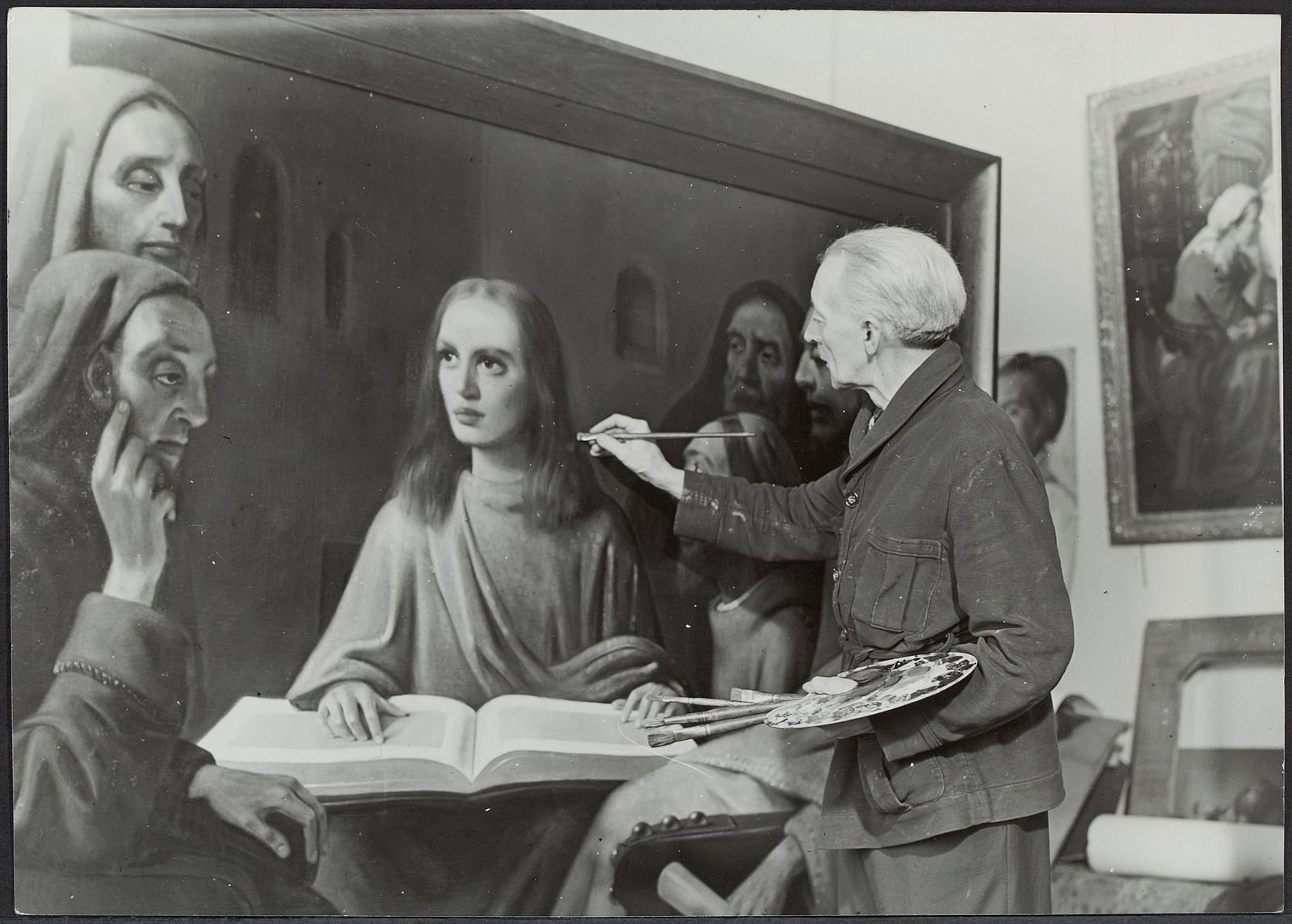…My Fulbright involvement with Ukraine began in 2016 when I was awarded Fulbright Specialist status, so returning to Ukraine, even on other occasions, has already started to feel in some ways like coming home
Read MoreIn the Studio: Elizabeth Catlett
While I was teaching overseas on a Fulbright Award last October, my client, Kyra Hicks, informed me that a sculpture her family had owned (and that I knew well) - Elizabeth Catlett's "Seated Woman" - had set a new auction record for the artist.
I had treated that sculpture earlier in the year. Kyra is a granddaughter of the original owners, and the purchaser was the St. Louis Museum. This event and my experience treating the sculpture have prompted me to share some thoughts on collecting and living with works of art and the challenges conservators face in preserving these works for future generations.
Read MoreWooden Churches in Ukraine - A conservation Assessment Workshop (in Ukrainian), June 27, 2019
Read MoreBugs in the Art!
Lately, they seem to be everywhere, including in works of art. Whether found in private collections or leading institutions, insects appear to be taking advantage of global warming and thereby putting works of art at risk.
Also, due to the increased number of international traveling exhibitions, the ability of insects to travel quickly from one end of the globe to another has risen dramatically. Such was the case recently when a group of contemporary paintings arrived from overseas for an exhibition at a noted NYC gallery. Upon opening the shipping containers, art handlers discovered insects in the plastic wrapped paintings. It was at that point that we were called in to inspect and to propose a solution.
Read MoreTime Flies
It is very rare to discover decorative works of art over 250 years old that have not passed through the hands of a restorer. Revolutions, wars, change of ownership or location all take their toll, and occasionally not to a work’s benefit. Such was the case recently when a Longcase Regulater clock by Balthazar Lieutaud from mid 18th century France arrived in our studio.
Read MoreIn 2016 Yuri Yanchyshyn was awarded Fulbright Specialist Status, and in the spring of 2018, under the auspices of the Fulbright Program, spent six weeks teaching in Lviv, Ukraine. The following introduction, images, and personal impressions describe his experiences.
Read MoreThe February 2016 issue of Maine Antiques Digest published an article by Yuri Yanchyshyn entitled "Advances in Wood Identification and Thereby Attributions."
Read MoreAn Art Work’s Environment
The January snowstorm in New York City, with over two feet of snow, brought back memories of the winter of 2015, which was particularly challenging for many art collections in the Northeast. During that period, an 18th century Diego and Evans English tall case red japanned clock had suffered significantly, and we were asked to conserve it. Today, after conservation, this beautifully painted object is prominently installed at the Museum of Fine Arts, Boston. Its ordeal, however, brings up a wide range of environmental issues that impact all works of art, irrespective of object, type, or medium.
Read MoreIt is (Almost) All in the Mind: Guarding Against Furniture Fakes
from Chubb Collectors
There have been copies sold for as long as human beings have valued particular types of objects. During the Roman Republican period and early Empire there was a robust trade in copies of Greek statuary. This article can be read in its entirety here.
Read MoreFunctional Hardware & Fasteners
Last year was a banner year for furniture exhibitions in New York City. Surely one of the most memorable was the Abraham and David Roentgen exhibition at the Metropolitan Museum. In fact, the exhibition was so popular that the YouTube video depicting the Roentgens' Berlin Secretary Cabinet generated nearly five million hits.
Read Morefrom The Wall Street Journal
Scattered around Yuri Yanchyshyn's studio in Long Island City, N.Y., are high-powered microscopes, hundreds of wood samples and an extraordinary array of tools and application materials ... One of his most challenging projects, the 63-year-old Detroit native says, was a 1930s Frederick Kiesler dresser owned by a private collector. "It had been improperly restored with an incorrect veneer." This meant he had to identify the right veneer and then match the degraded original coating. Working with two of his staff, it took two months to restore the piece ... "Yuri has an intuition of how far to go with restoring," says Horace "Woody" Brock, an economist and avid collector of fine arts, whose collection of English Regency furniture and decorative arts is now part of Boston's Museum of Fine Arts.
Read MoreWhat Wood Is That?
The identification of old woods is part of everyday life in the studio, and the examples we see can be difficult to recognize with certainty. Recently we were asked to conserve a beautiful and intricate parquetry panel whose design featured many different veneers. Since there were a few missing sections, we examined the veneers in situ to determine appropriate matches for replacement.
Read MoreIssues in Furniture Conservation
from Appraising Art — The Definitive Guide to Appraising the Fine and Decorative Arts, published by the The Appraisers Association of America
Appraisers assess furniture for a variety of reasons: to determine valuation for insurance, estate tax, or gifting purposes; or to determine an object's condition prior to transit. see pp. 80-83
Read MoreGilded Frames
Many times when viewing paintings, drawing and prints, it is impossible not to notice how much their frames add to the esthetic experience. This happened to me recently, while viewing the alluring exhibition "Impressionism, Fashion, and Modernity" at the Metropolitan Museum of Art.
Read MorePeinture en Bois
Marquetry is often considered the zenith of the cabinetmaker's art. The ingenuity required to conceive and piece together intricate designs made of various types of wood frequently yields breathtaking results. Unfortunately, objects decorated with marquetry require particular care and are quite susceptible to conservation issues. There is nearly always such an object in the studio for treatment.
Read Morefrom AXA Art
Mid-century modern furniture is in demand by collectors, who prize its typically sleek aesthetic and diversity of styles. But furniture from this era comes with some innate issues, due to the large number of nontraditional materials used in its creation.
Read MoreThe Conservation of an Ivory Statue
Nearly every prominent collection of decorative art objects includes items made of materials that are now considered rare or are regulated by government agencies. Ivory is perhaps foremost among these materials. It has been favored by craftsmen for centuries. Famous examples include the Venus of Schelklingen, believed to be more than 35,000 years old, and carved from mammoth ivory, and the Lewis Chessmen, dating from the twelfth century.
Read MoreFurniture Condition Checklist
The beginning of autumn is a good time examine your furniture collection for early signs of wear, and to prepare for the upcoming entertaining and holiday season. The following short checklist can assist you.
Read MoreConservation of Historic Metals
Private collections in New York City include stellar examples of decorative art metalwork, including the above precious metal examples we had the privilege to treat recently. The image on the left is part of a sterling silver coffee and tea service, c.1925-30, by Georg Jensen with horn handles, smooth metal, and a brilliant finish.
Read MoreCare and Preservation of Historic Furniture
from the Art of Leadership Series, The Magazine, Volume 1, Issue 4, March 2011
It could be your grandmother’s china cabinet, a chest brought back by a relative from overseas, a handmade table purchased directly from the artist or a period chair that is part of a larger collection. (Click here to read the entire article.)
Read More



















